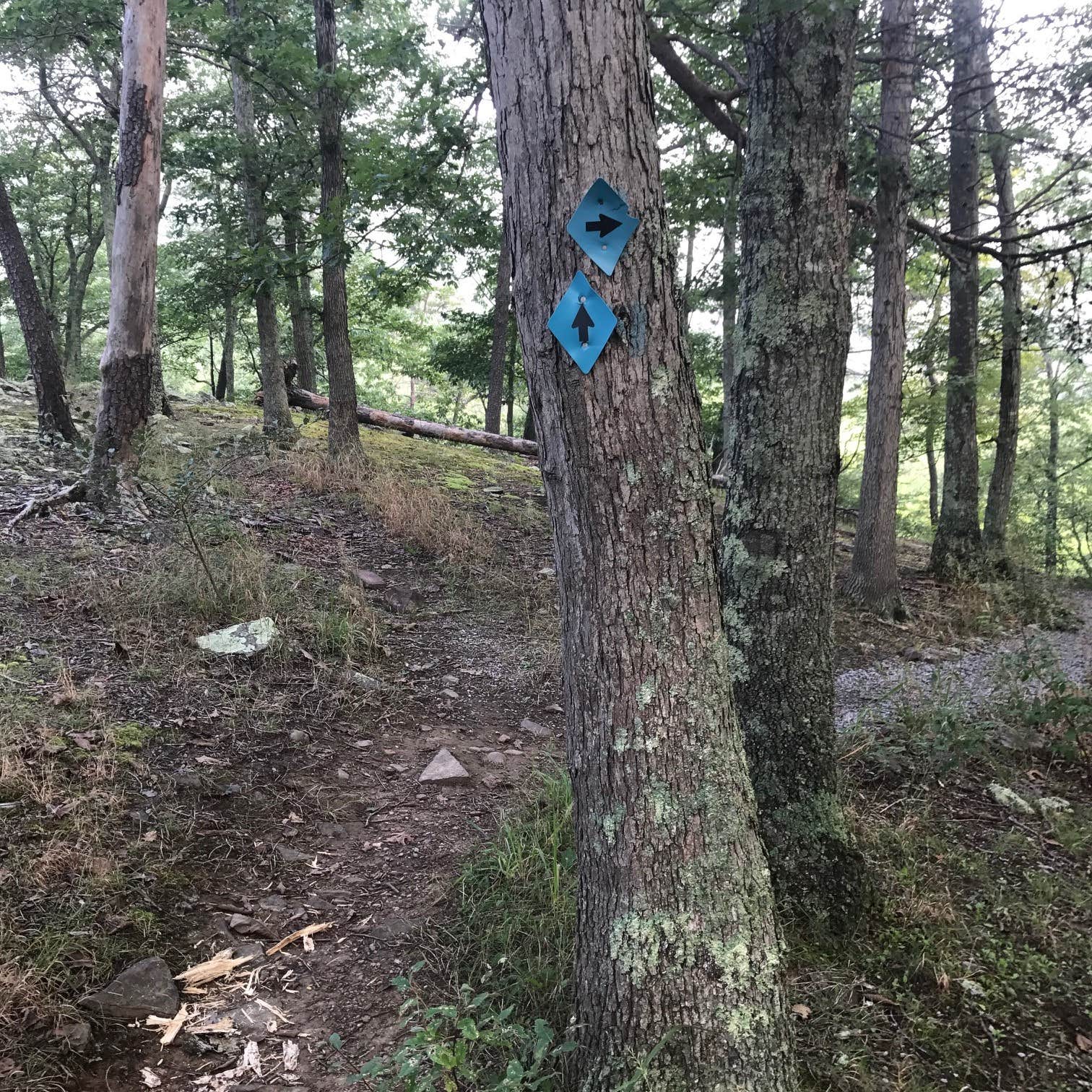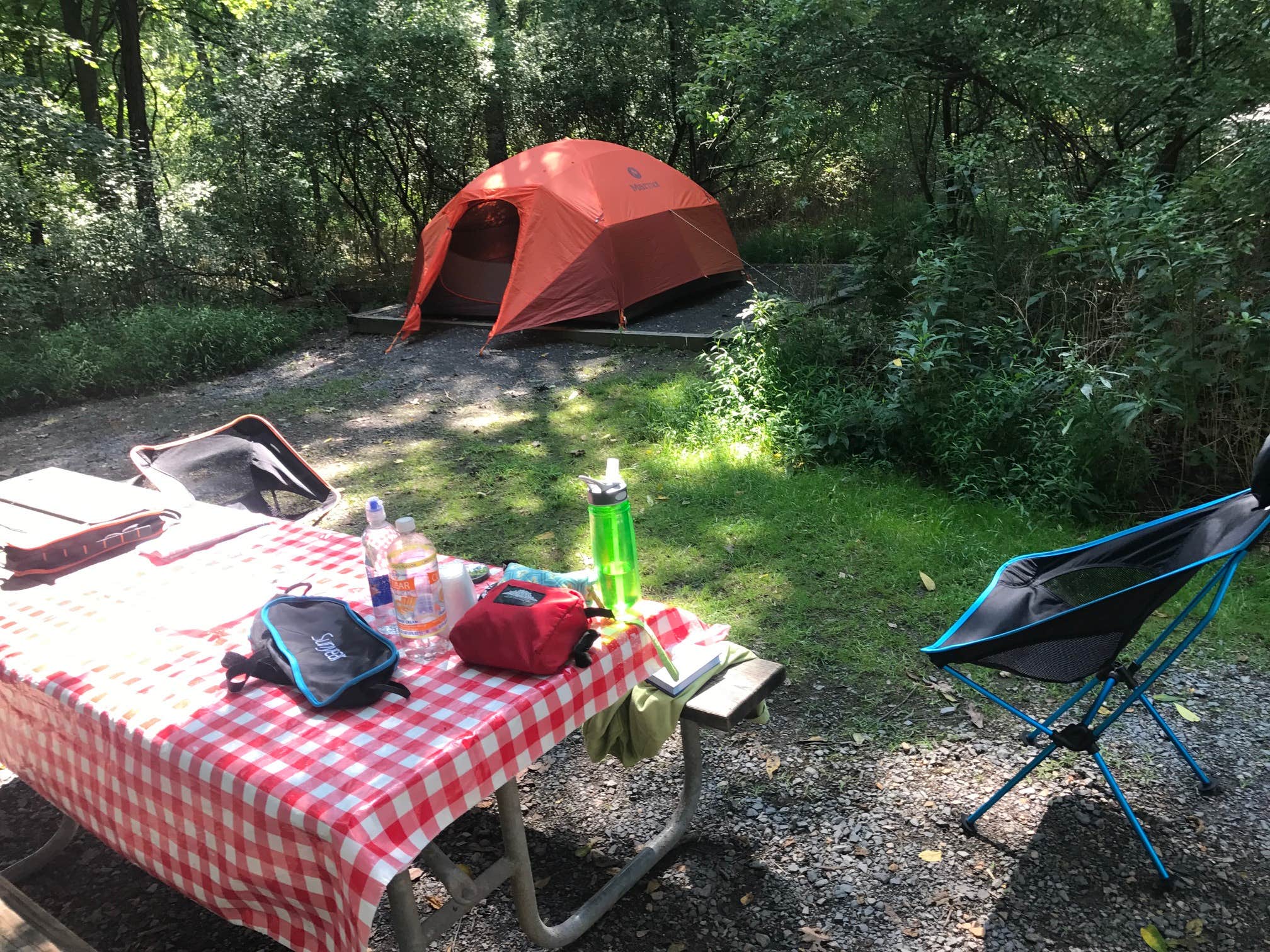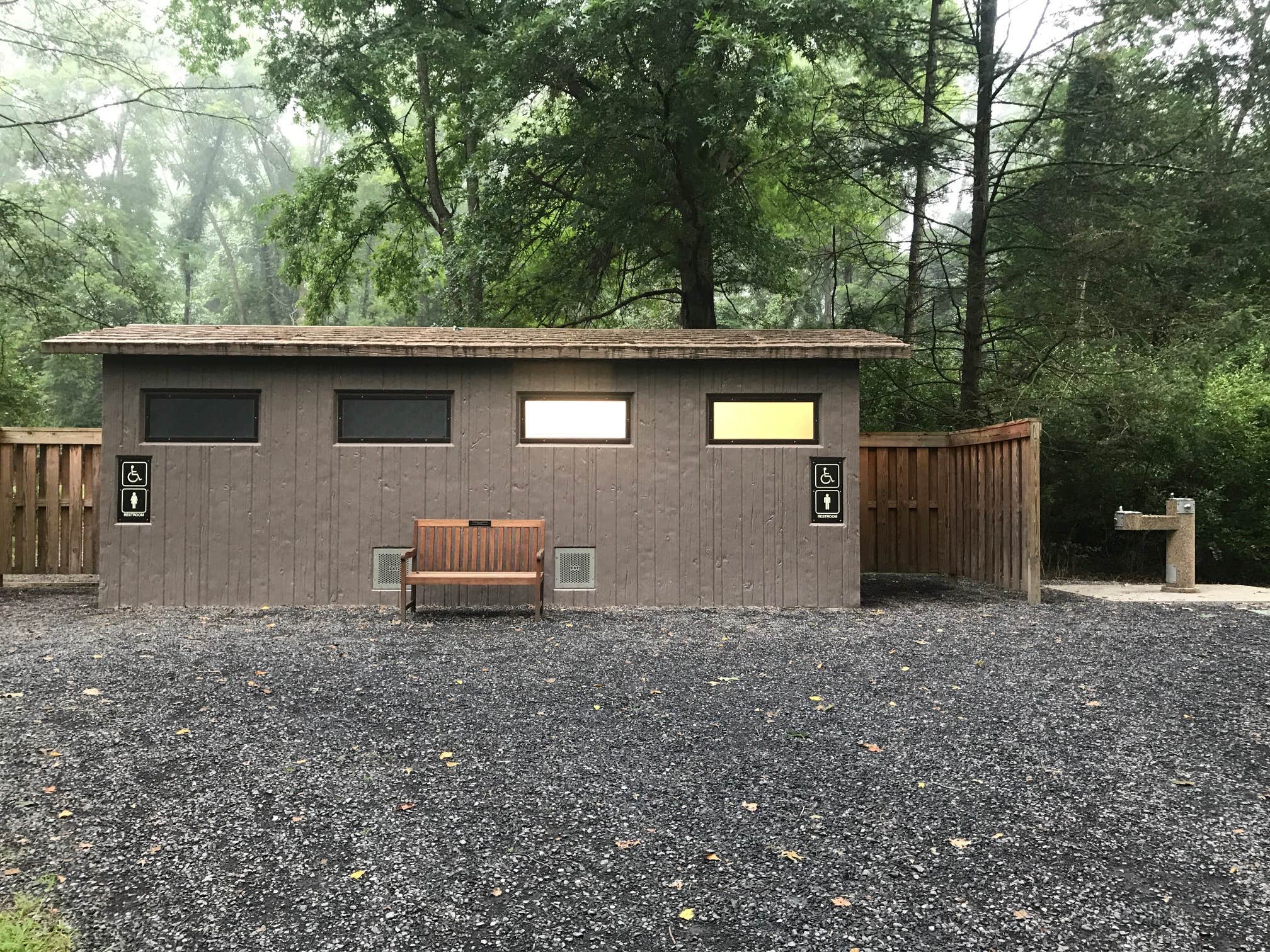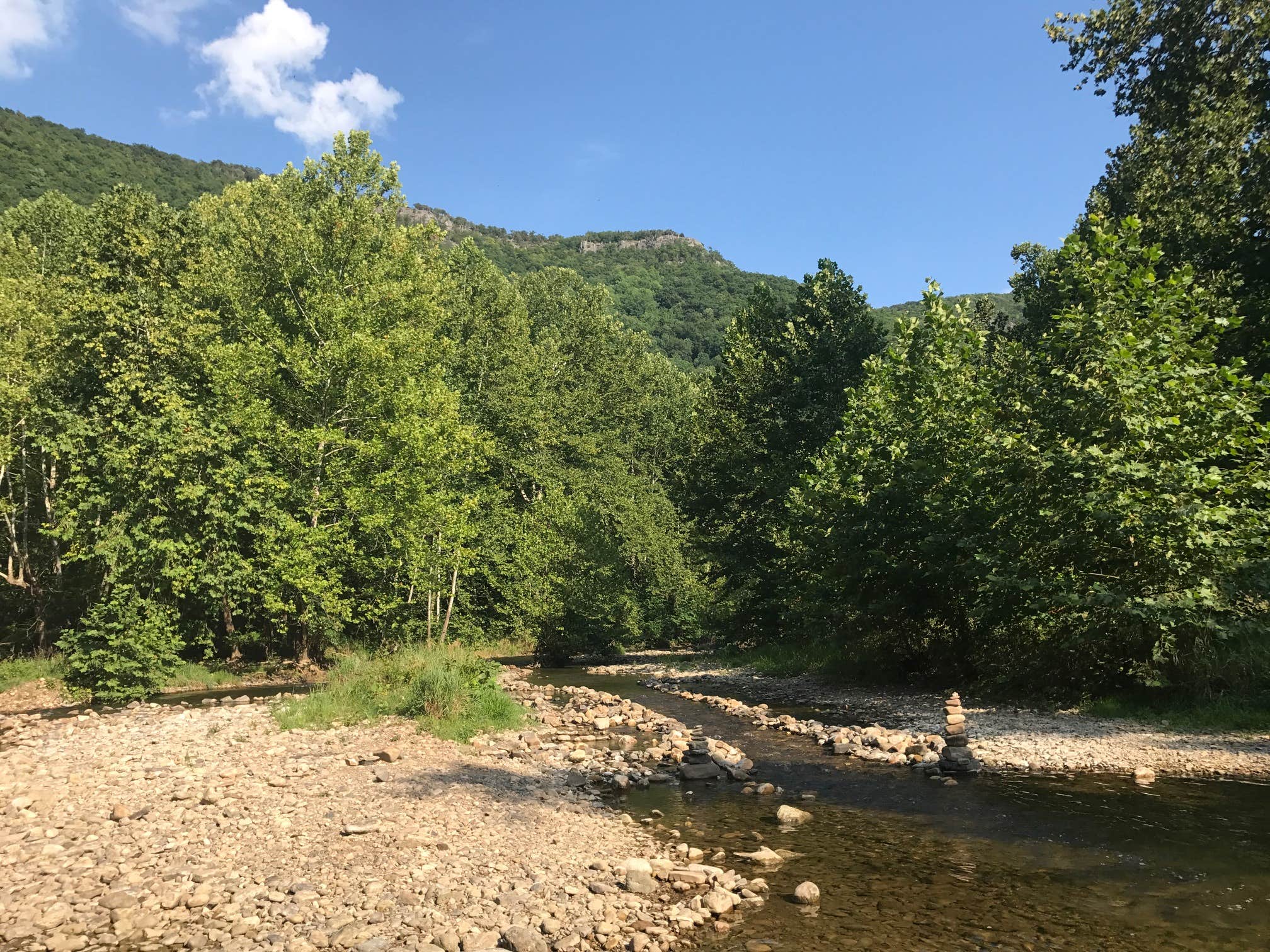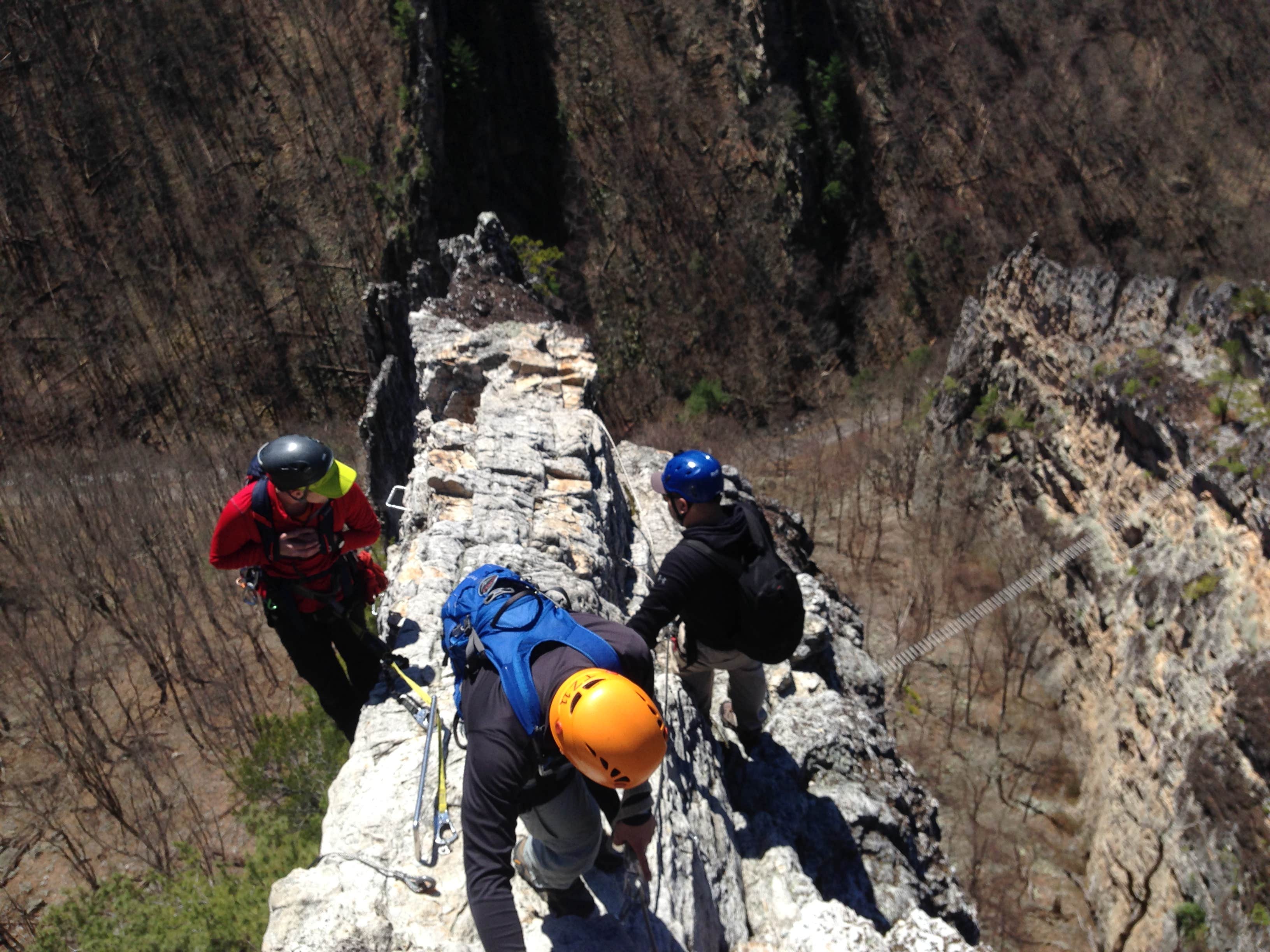Public Campground
Big Bend Campground
Big Bend, near Monongahela National Forest, is a charming campground that offers a unique blend of rustic beauty and outdoor adventure. With its well-maintained sites surrounded by stunning mountain views and the gentle flow of the South Branch of the Potomac River, it’s a fantastic place to unwind and connect with nature.
The campground is known for its excellent tubing and fishing opportunities, making it a hit for families and friends looking to enjoy some water activities. Visitors have raved about the peaceful atmosphere, with one camper noting, “The highlight of my stay here were the hundreds of fireflies around my campsite in the evening.” The facilities are clean, and the friendly hosts ensure a welcoming environment for all.
For those who love to explore, the area is perfect for hiking and enjoying the scenic trails nearby. Just remember, there’s no cell service, so it’s a great chance to disconnect and soak in the natural beauty around you. Whether you’re floating down the river or stargazing at night, Big Bend offers a memorable camping experience that keeps campers coming back for more.
Description
Overview
Big Bend is located in the Smoke Hole Canyon Smoke Hole Canyon next to the South Branch of the Potomac River at the end of County Route 2. Located 10 miles south west of Petersburg, West Virginia. The river is located 200 feet from campground and is open for fishing and non-motorized boat use. A one mile loop trail is available for hiking at the campground and 60 miles of backcountry trails are located close by in the Seneca Creek Backcountry as well as the trails located in Smoke Hole Canyon. Big Bend Campground is comprised of 46 standard non-electric camping units with fire rings, lantern posts, picnic tables and paved spurs. In addition, there is a developed host site equipped with electrical, water, and sewage hookups. Parts of the campground and facilities within it are ABA accessible. The campground contains two single-unit vault toilets, two double-unit flush toilets, and a four-unit flush restroom with four showers some of which are accessible. There are trash dumpsters located in each loop of the campground for garbage collection and disposal. There is one recreation vehicle dump station in Big Bend Campground located adjacent to the campground. Visitors staying at Jess Judy Group Campground may use the dump station at Big Bend Campground. There is an underground holding tank attached to the dump station. Holder is responsible for daily operations and maintenance attached the dump station and holding tank. The average operation and maintenance season for Big Bend Campground and Jess Judy Group Campground has been from approximately April 10th through Oct 31st. At a minimum, the Forest Service (FS) will expect the permit Holder to fully operate the campgrounds from the second Friday night in April through the last Saturday night in October. About 1.3 million people visit the Monongahela National Forest each year. The forest is a drivable distance from metropolises like Washington, D.C., and Pittsburg, yet still offers a remote and scenic camping getaway.
Recreation
The Big Bend Loop Trail is a one-mile nature trail that circles the campground. The majority of the trail follows along the river bend. Thirty miles of maintained trails can be found nearby, and mountain biking is permitted on most trails.
Facilities
Big Bend Campground is comprised of 46 standard non-electric camping units with fire rings, lantern posts, picnic tables and paved spurs. In addition, there is a developed host site equipped with electrical, water, and sewage hookups. Parts of the campground and facilities within it are ABA accessible. The campground contains two single-unit vault toilets, two double-unit flush toilets, and a four-unit flush restroom with four showers some of which are accessible. Jess Judy Group Campground contains three reservable sites that will accommodate up to 40 people each. The campground contains fire rings, picnic tables, lantern posts, and four single-unit vault toilets. There is no electric or drinking water at the group campground although persons camping at Jess Judy Group Campground may obtain water at Big Bend Campground. The group campground is not accessible. There are trash dumpsters located in each loop of the campground for garbage collection and disposal. There is one recreation vehicle dump station in Big Bend Campground located adjacent to the campground. Visitors staying at Jess Judy Group Campground may use the dump station at Big Bend Campground. There is an underground holding tank attached to the dump station. Holder is responsible for daily operations and maintenance attached the dump station and holding tank. There is a wastewater treatment facility (Filtered Drain Field) located within the campground. Holder is responsible for daily operations and maintenance of this facility. The average operation and maintenance season for Big Bend Campground and Jess Judy Group Campground has been from approximately April 10th through Oct 31st. At a minimum, the Forest Service (FS) will expect the permit Holder to fully operate the campgrounds from the second Friday night in April through the last Saturday night in October. The Big Bend Loop Trail is a one-mile nature trail that circles the campground. The majority of the trail follows along the river bend. Thirty miles of maintained trails can be found nearby, and mountain biking is permitted on most trails.
Natural Features
Big Bend Campground is in the northern portion of the Monongahela National Forest, boasting beautiful old growth trees that become vibrant with color in fall. The river runs north through the Smoke Hole Canyon, which bears a name of uncertain origin. One theory is Native Americans used the caves of the gorge for smoking meat, which created "smoke holes." Another is that misty fog often lies along the river and ascends in what looks like smoke from a hole.
Nearby Attractions
The Highland Scenic Highway provides an unforgettable drive through narrow, steep valleys and rolling, tree-topped mountains. Estimated time to drive on this byway is two to four hours, and highlights include Cranberry Glades Botanical Area, Summit Lake and Falls of Hills Creek.
Drive Time
- 1 hr 30 min from Harrisonburg, VA
- 2 hrs 1 min from Winchester, VA
- 2 hrs 30 min from Morgantown, WV
Location
Big Bend Campground is located in West Virginia
Directions
Follow 28/55 from Petersburg, West Virginia, for 8 miles. Turn left onto Smoke Hole Road, Route 28/11, and travel for 13 miles to County Route 2. Turn left onto the Smoke Hole Road, County Route 2, and follow for approximately 3 miles to Big Bend Campground.
Address
MONONGAHELA
WV
Coordinates
38.8956944 N
79.2456944 W
Connectivity
- T-MobileNo Coverage
- VerizonNo Coverage
- AT&TNo Coverage
Connectivity
- T-MobileNo Coverage
- VerizonNo Coverage
- AT&TNo Coverage
Access
- Drive-InPark next to your site
- Walk-InPark in a lot, walk to your site.
Site Types
- Tent Sites
- RV Sites
- Standard (Tent/RV)
- Group
Features
For Campers
- Trash
- Firewood Available
- Reservable
- Drinking Water
- Toilets
- Alcohol
- Pets
For Vehicles
- Sanitary Dump
- Pull-Through Sites
Contact
General Info
Reservations

